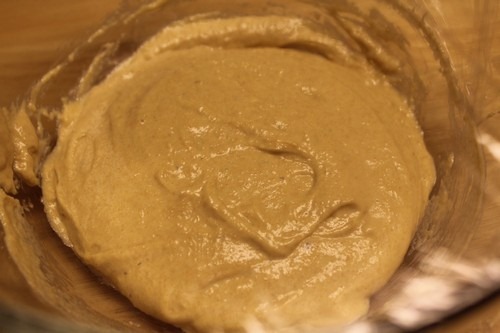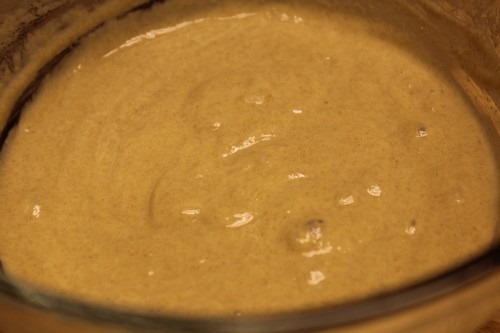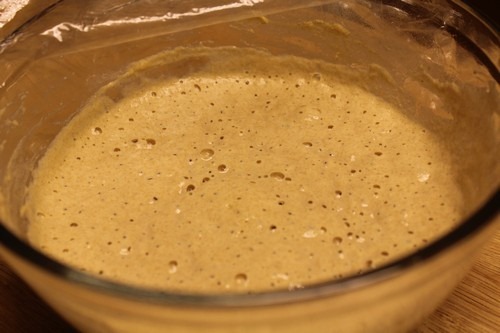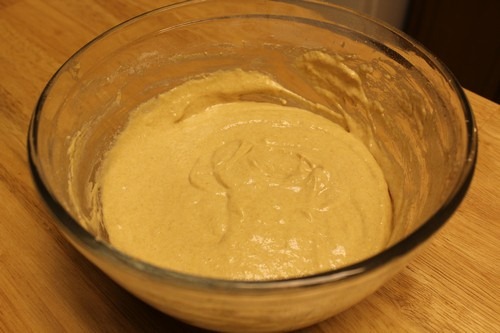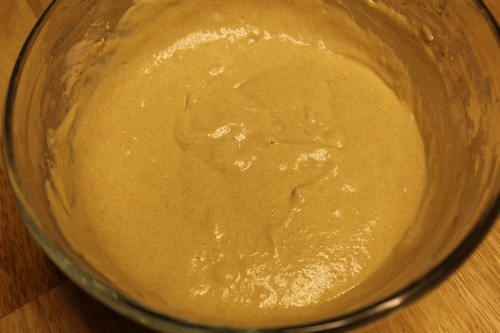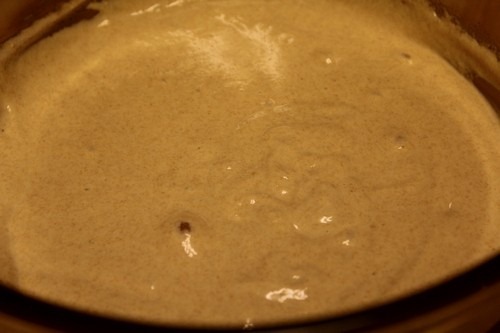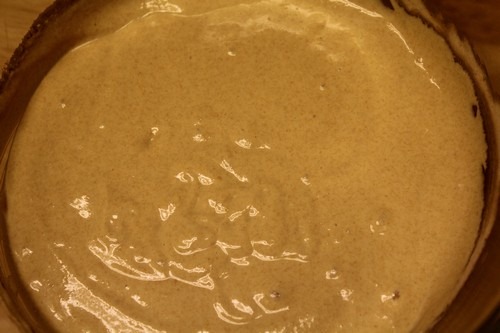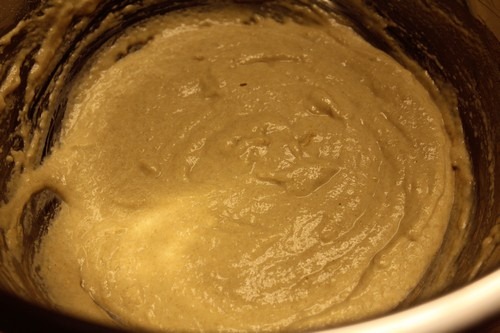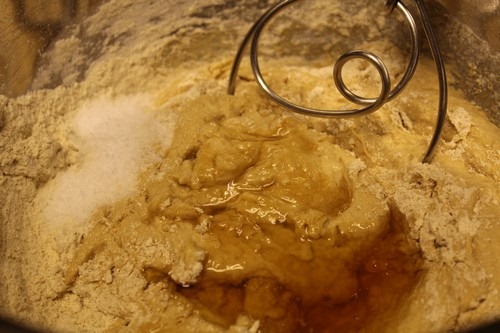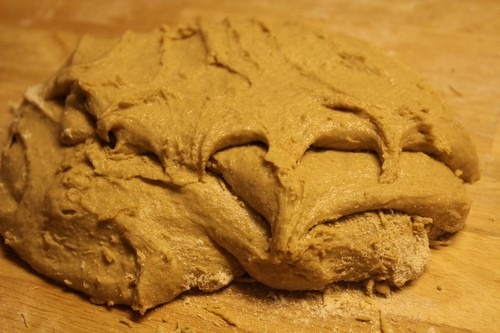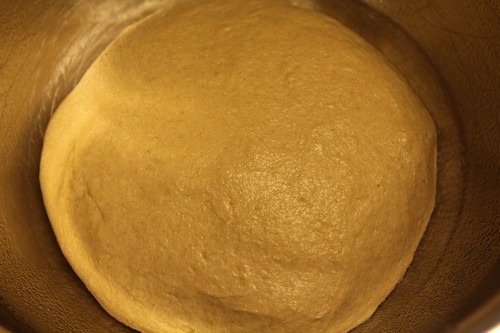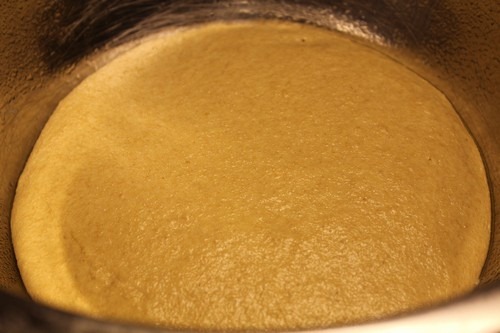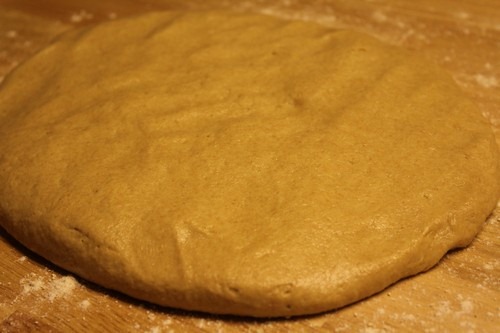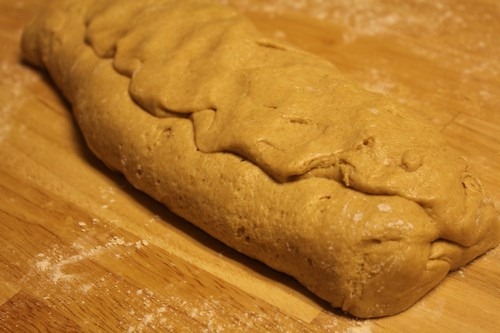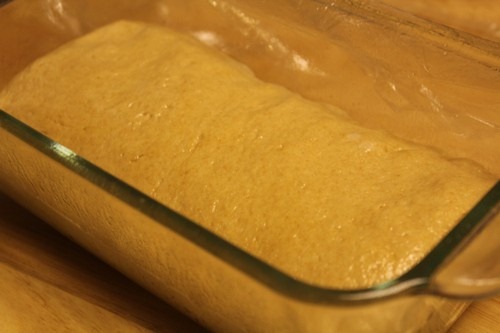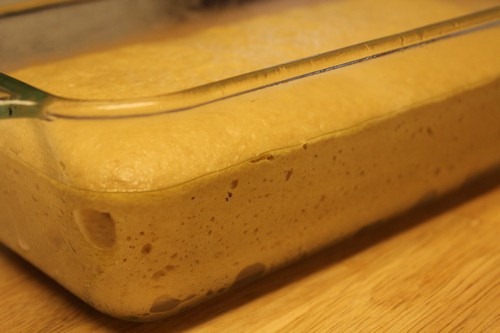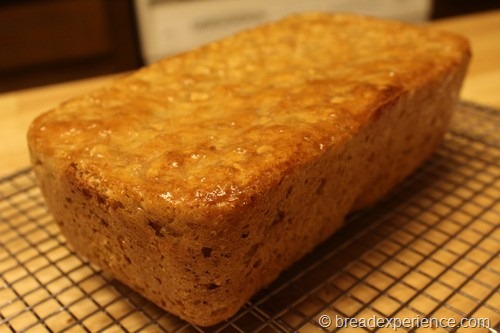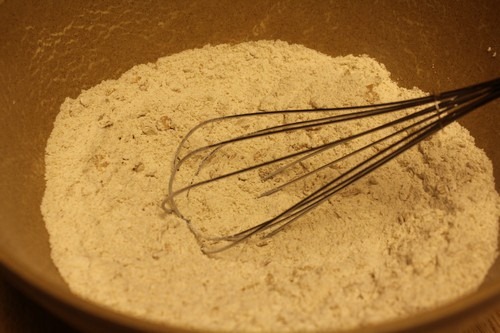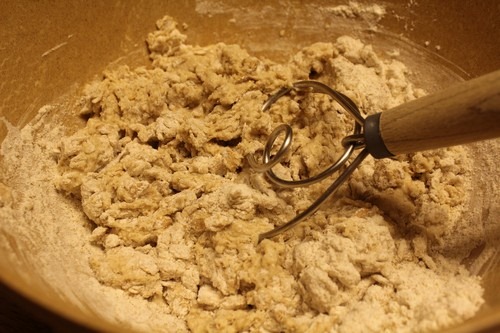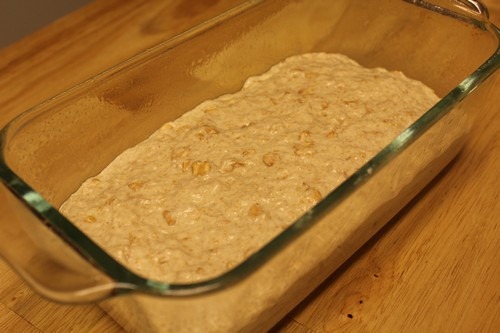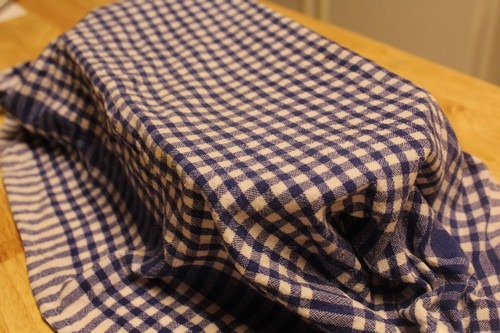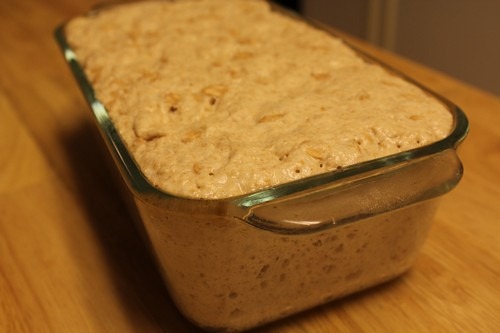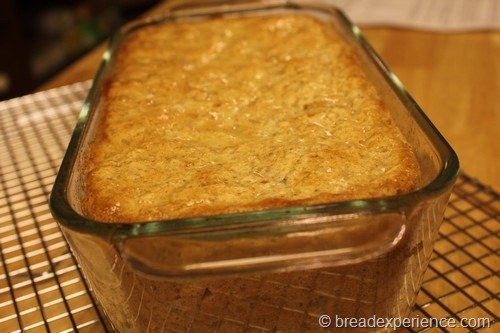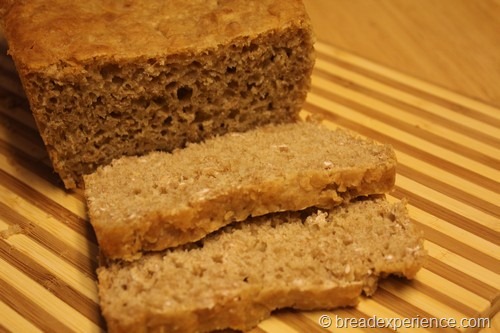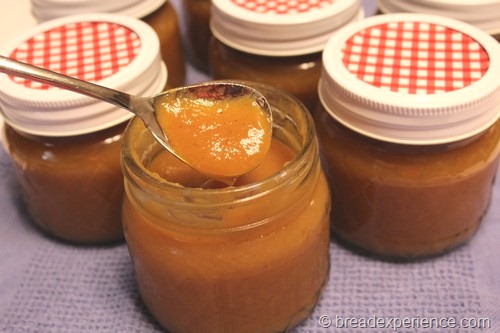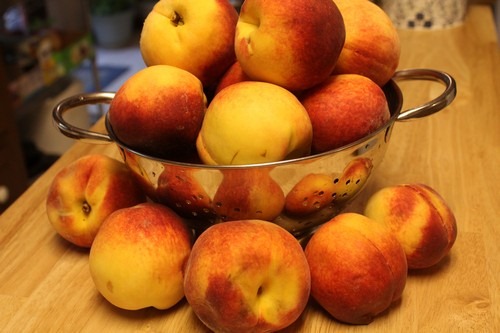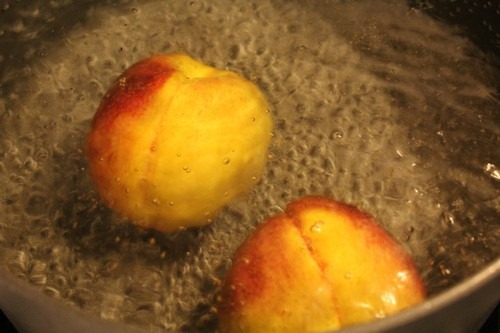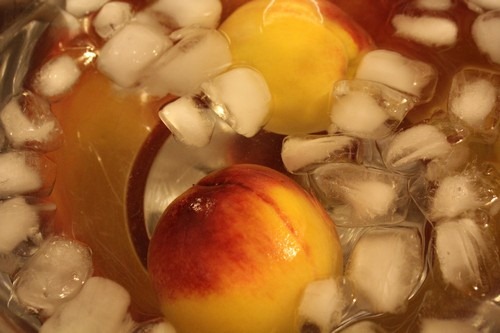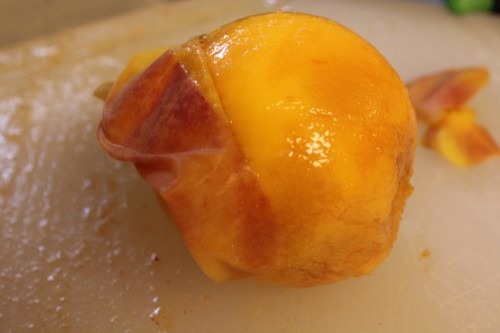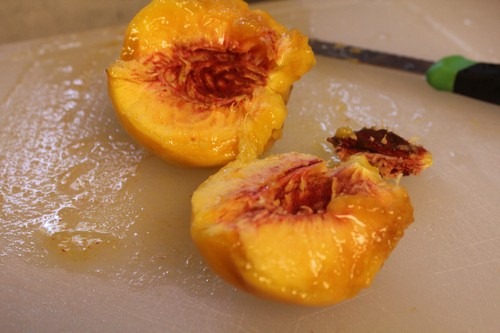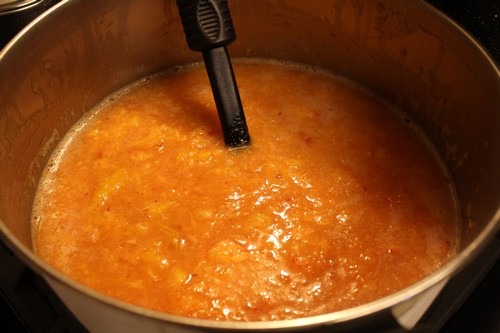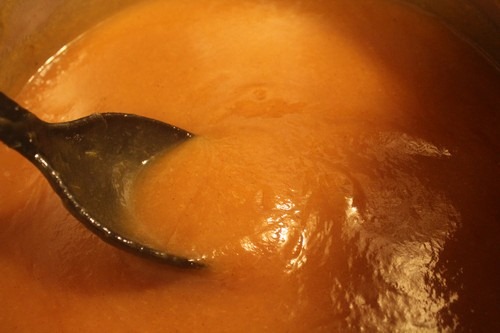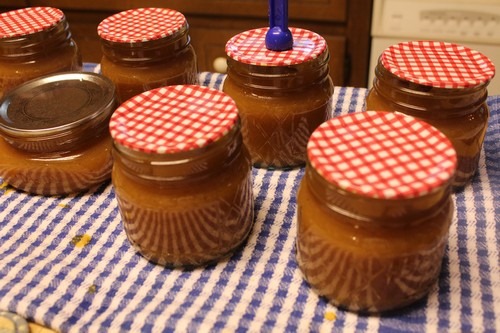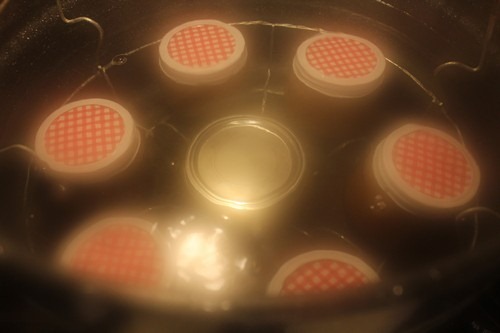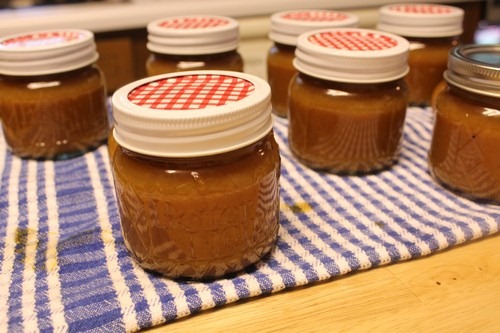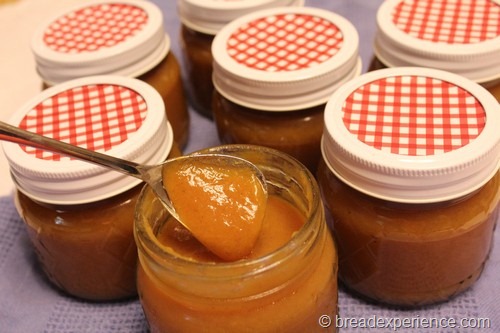The theme for Bread Baking Day (BBD) #52 is French Breads. I’m glad Cindy of CindyStarblog chose this theme because I’ve had these baguettes on my list to bake for several weeks. I wanted to continue my baguette-making journey and this provided another opportunity… not that I need any motivation to bake bread.
I’ve been out-of-town on business so my issue was finding the time to actually make them. I finally got the opportunity to bake bread this weekend. It felt so good.
These straight baguettes are really easy. They can be made the same day. It usually takes about 5 hours from start to finish. They don’t even require an overnight poolish or Pâte Fermentée. If you want to serve baguettes for dinner, and have a few hours, this could be a good option.
I started making these baguettes Sunday afternoon, but ran out of steam before I could finish so I retarded the dough in the refrigerator overnight.
The next day, I let the dough warm up to room temperature for a couple of hours and then shaped, proofed and baked the baguettes.
I suppose officially this version wouldn’t be considered a straight baguette, but this process worked better with my schedule and energy level.
Straight Baguettes
Adapted from: The Fundamental Techniques of Classic Bread Baking by The French Culinary Institute
Makes: 2 Baguettes
Ingredients:
- 383 g (~3 cups) bread flour, plus extra for dusting
- 284 g (~1 1/4 cups) water
- 2 g (3/4 tsp) instant yeast
- 7 g (1 tsp) salt
Directions:
1. Mix the bread flour and water until thoroughly blended. You can use an electric stand mixer fitted with a dough hook and mix on low speed, but this dough really doesn’t need a mixer. I used a Danish dough whisk.
2. Let the dough autolyse (rest) for 15 minutes. Then add the salt and yeast and mix until thoroughly blended. The resting period helps the gluten structure start to develop. If necessary, add a little extra water to help dissolve the salt and yeast.
3. Scrap dough into the bowl. Don’t add any additional flour, just scrap the wet dough (using a dough scraper or a wooden spoon) into a large greased bowl. Cover the bowl with plastic wrap and let the dough rest for 20 minutes.
4. Fold the Dough. Uncover the dough, fold it, then cover it back with plastic wrap and let it rest another 20 minutes. Repeat this process and let the dough rest an additional 20 minutes.
5. Final Fold. Uncover the dough again and fold it, then cover it with plastic, but this time let it bulk ferment for 2 hours. I let mine bulk ferment for about an hour or so, then placed it in the refrigerator overnight.
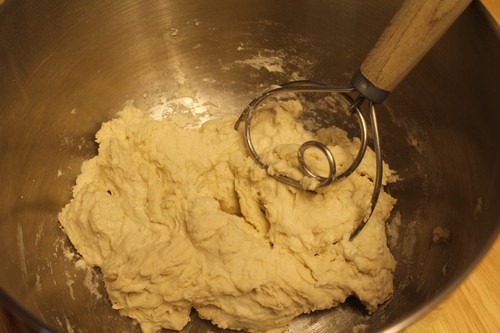 | 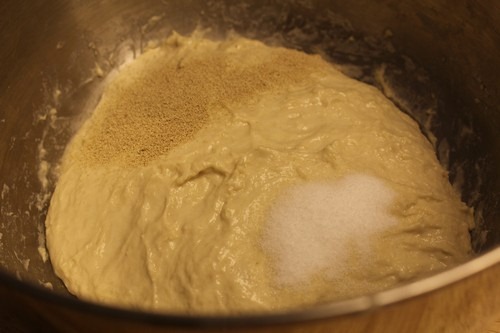 |
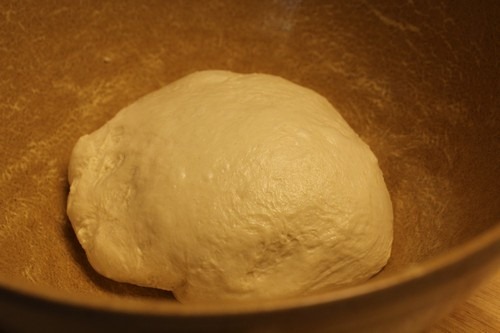 | 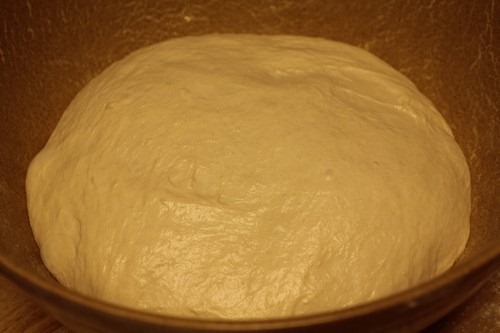 |
6. Preheat the oven to 450 degrees F. about an hour before you plan to bake the baguettes. If you are using a baking stone, place it in the oven to preheat along with a steam pan underneath. I decided to use my baguette pan for these loaves so I didn’t use the baking stone, just the steam pan.
7. Form the dough into rough logs. Uncover the dough and form 2 logs on a lightly floured, clean work surface. Mist them lightly with spray oil and cover them with plastic wrap. Let them rest for 15 minutes.
8. Shape the logs into batards. Begin by gently pressing on the dough to degas it. Shape it into a rough rectangle.
Fold the top of the dough down and seal it with you fingers to degas it somewhat. Then fold the lower section of the dough up and seal it with your fingers. You’ll end up with a rough batard-shaped loaf. This is the seam side up view.
9. Shape into Baguettes. Turn the dough seam side down and using cupped hands, roll the dough back and forth from the middle out, to extend the dough into the shape of a baguette.
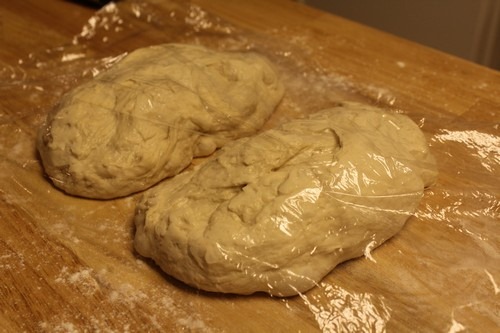 | 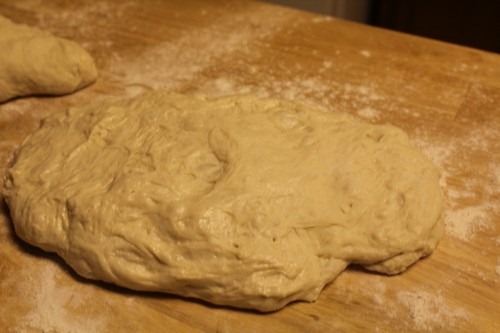 |
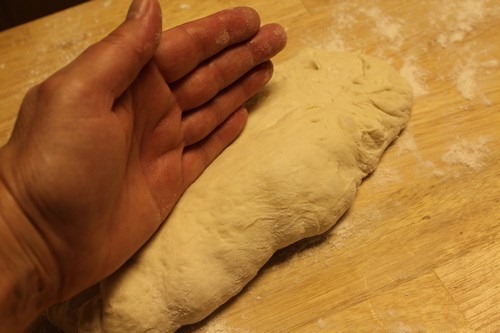 | 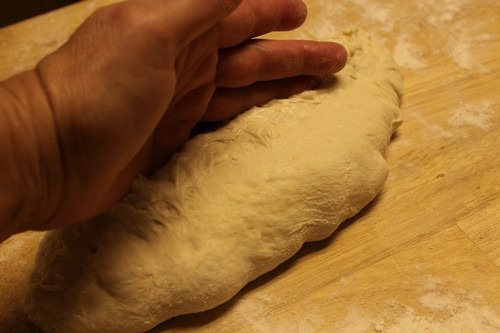 |
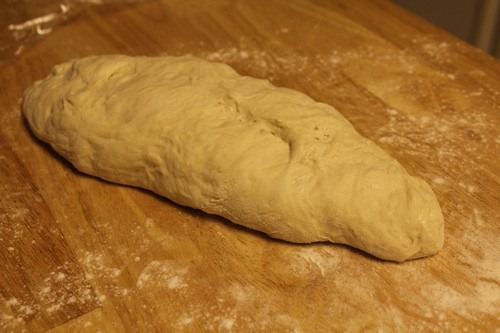 | 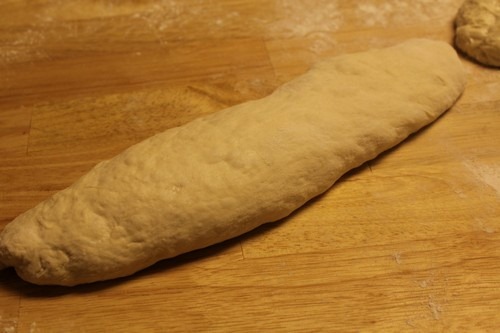 |
10. Proof the Loaves. Place the loaves seam side down on a baker’s couche or baguette pan. Cover again with plastic wrap and let them proof for 30 minutes.
11. Score the Loaves. Uncover the dough, then use a lame or razor to score the loaves for baguettes. I made the French cut version, where you make about 4 or 5 vertical, but slightly angled slashes in the dough starting at the top left of the loaf and ending at the bottom right. The slashes should overlap about an inch or so.
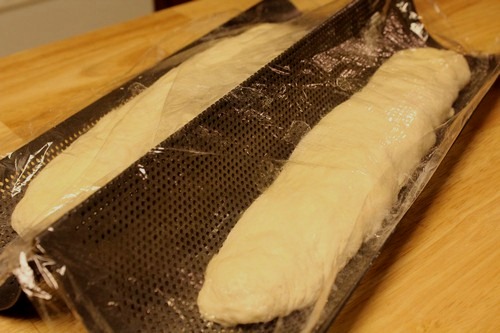 |  |
12. Bake the Loaves. Add 1 cup of ice to the steam pan in the preheated oven and immediately transfer the loaves onto a baking stone (if using) or place the baguette pan in the oven. Spritz the loaves with water and close the oven door. Repeat the spritzing a couple more times during the first few minutes, then close the door. Let the loaves bake for 25 minutes or until the crust is a deep golden-brown and the sides are firm when you touch them.
13. Cool the Loaves. Remove the loaves from the oven and transfer them to a wire rack to cool.
14. Slice and Enjoy!
 |  |
This bread has been YeastSpotted.
I was pleased with the results and the flavor of these baguettes. I heard them crackle when I took them out of the oven and let them cool on the wire rack. I didn’t taste them until the next day, but they tasted good not blah like I expected from a baguette without a preferment. I had them with some organic butter. Yum!
Happy Baking!
Cathy

Thanks to Cindy for hosting Bread Baking Day #52
BreadBakingDay was created by Zorra of http://kochtopf.twoday.net/stories/4124192/.


